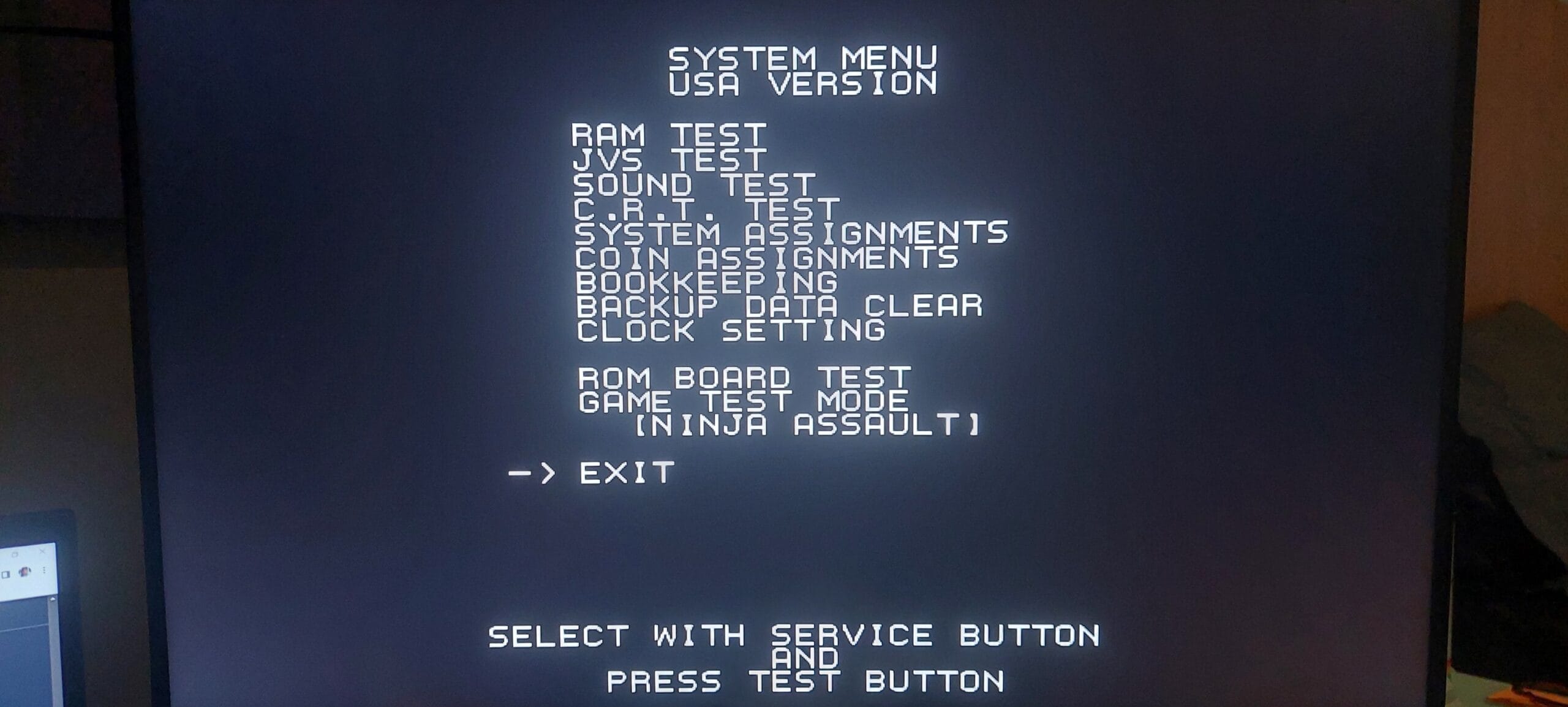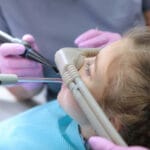Navigating the Diagnostic Landscape: Understanding Medical Systems Test Menus
Medical systems test menus are essential tools for healthcare professionals. These comprehensive lists detail the diagnostic tests a specific machine can perform, guiding clinicians in selecting the right tests for their patients. Think of them as a roadmap through the complex world of diagnostics, helping to ensure accurate diagnoses and informed treatment decisions. Let’s explore what medical systems test menus are, why they matter, and how they contribute to patient care.
What is a Medical Systems Test Menu?
A medical systems test menu is a catalog of all the tests a particular diagnostic machine can perform. Imagine a sophisticated laboratory instrument; its test menu outlines its analytical capabilities, from routine blood sugar checks to highly specialized genetic marker assessments. This menu is invaluable for healthcare providers, enabling them to choose the right diagnostic tool based on the specific information needed. Would you like to know more about nasopharyngeal stent? If you do, don’t forget to read about the omg approach as well.
Key Players in Diagnostic Systems
Several companies manufacture these essential diagnostic machines, each with unique test menus. Leading manufacturers like Siemens Healthineers (with systems like ADVIA Centaur and VERSANT), QuidelOrtho, Cepheid, Roche Diagnostics (offering the cobas® pure), and Abbott, each provide a range of systems, each with its own strengths and specialized areas. This variety allows healthcare facilities to select systems tailored to their specific needs, much like choosing a car based on its features and performance.
The Advantages of Comprehensive Test Menus
Medical system test menus offer several significant advantages:
- Comprehensive Testing: A broad test menu allows a single machine to handle a wide variety of tests, from routine checkups to specialized investigations, improving efficiency and reducing the need for multiple machines.
- Rapid Results: Modern diagnostic systems employ technologies like chemiluminescence and molecular diagnostics, expediting results and informing timely treatment decisions, particularly in critical situations.
- Enhanced Accuracy: Accurate and reliable tests are paramount for correct diagnoses. Test menus contribute to minimizing errors and ensuring patient safety by providing precise results.
- Seamless Integration: Many systems integrate smoothly with existing laboratory software, automating tasks, reducing manual errors, and streamlining workflow.
Choosing the Right System: Comparing Test Menus
Selecting the appropriate medical system is a critical decision. Comparing test menus requires careful consideration of several key factors:
| Factor | Description |
|---|---|
| Test Selection | Does the menu include the specific tests required by the lab? |
| Sensitivity and Specificity | How effectively does the test identify individuals with and without the condition? |
| Throughput | How many samples can the system process within a specific timeframe? |
| Turnaround Time | How long does it take to receive the results? |
| Cost per Test | What is the expense associated with running each test? |
| Integration | How seamlessly can the system connect with the lab’s current equipment and software? |
The Future of Diagnostics
The field of medical testing is constantly evolving. Emerging technologies such as point-of-care testing (performing tests directly at the patient’s location) and artificial intelligence are poised to transform diagnostics. Ongoing research continually seeks to improve the speed, accuracy, and accessibility of diagnostic tests, suggesting that test menus of the future may look quite different from those we see today.
Conclusion
Medical systems test menus are integral to modern healthcare, influencing everything from routine screenings to intricate diagnoses. While they may initially appear complex, understanding their significance empowers both healthcare providers and patients to navigate the diagnostic process with greater confidence. By enabling labs to choose the best tools for their needs, these menus ultimately contribute to improved patient care. As technology progresses, these menus will undoubtedly evolve, opening doors to even more advanced and personalized medicine.
Access a Universe of Medical Tests: Exploring Leading Diagnostic Systems
Taking charge of your health involves understanding the diagnostic tools available. Comprehensive medical test menus offered by leading diagnostic companies like Labcorp, Quest Diagnostics, and Siemens Healthineers provide detailed information about a wide range of testing options, empowering you to actively participate in your healthcare journey. These menus are valuable resources, enabling you to understand different tests, from routine blood work to cutting-edge molecular and PCR testing, and engage in more informed discussions with your doctor.
Understanding Comprehensive Test Menus
These menus are more than just lists of medical jargon. They serve as guides to understanding the numerous ways to gain insight into your well-being. Whether you’re interested in routine screenings, exploring specialized tests, or learning about advanced diagnostic technologies, these menus provide a starting point. For example, if you’re experiencing fatigue, instead of accepting a general diagnosis, you could explore a comprehensive test menu and discover tests specifically assessing thyroid function, iron levels, or vitamin deficiencies. This knowledge equips you to discuss these targeted tests with your doctor and potentially pinpoint the cause of your fatigue more efficiently.
Navigating and Using Test Menus
Think of these menus as comprehensive health information catalogs. Many diagnostic companies offer user-friendly websites where you can search for tests based on specialty (cardiology, oncology), condition (diabetes, heart disease), or technology used (PCR testing). You’ll probably find descriptions of each test, its purpose, and the required sample type (blood, urine). This helps you understand the process and the purpose of each test.
Comparing Leading Providers
- Labcorp: Known for its extensive menu, covering a wide range of tests, from standard blood panels to specialized genetic screenings, with a particular emphasis on oncology-focused tests.
- Quest Diagnostics: Praised for patient education materials, offering searchable tests by various categories and in-depth information on the rationale behind specific tests.
- Siemens Healthineers: A global leader in healthcare technology, offering a comprehensive range of solutions and frequently at the forefront of innovative testing methods.
| Feature | Labcorp | Quest Diagnostics | Siemens Healthineers |
|---|---|---|---|
| Test Menu | Extensive, covering various specialties | Robust, with strong patient education | Comprehensive, with focus on innovation |
| Search Options | By specialty, condition, technology | By category, condition, research topics | Varies based on specific platform |
| Strengths | Broad range of tests | Educational resources | Technological advancements |
The Importance of Professional Consultation
While these menus empower proactive health management, they are not intended for self-diagnosis. Interpreting results and making medical decisions should always involve a qualified healthcare professional. Your doctor can interpret results within the context of your overall health, family history, and lifestyle, and guide you on the limitations of tests and the risks and benefits of further testing or treatment.
The Evolving Landscape of Diagnostics
The field of diagnostics is constantly evolving. New tests are continually being developed and refined, driven by ongoing research. Staying informed and communicating openly with your healthcare provider is essential. They can help you navigate these advancements and make informed decisions based on the latest scientific evidence. By exploring these test menus and engaging in discussions with your doctor, you can actively shape your health journey and make the most informed choices possible.
Streamlining Diagnostics: Optimizing Test Menus with AI for Enhanced Efficiency and Accuracy
Just as a well-organized restaurant menu simplifies ordering, efficient diagnostic test menus are vital for healthcare professionals. These menus, essentially catalogs of available tests on specific diagnostic machines, are key to accurate and timely diagnoses. A streamlined test menu empowers healthcare professionals to make informed decisions, leading to better patient outcomes.
The Power of Efficient Test Menus
Comprehensive test menus, accessible within a single lab, offer a wide array of testing options, potentially reducing the need for patients to visit multiple locations or undergo redundant procedures. A well-designed menu prioritizes relevant and effective tests, streamlining the diagnostic process and improving accuracy. By minimizing unnecessary tests, the likelihood of false positives or false negatives decreases, reducing wasted resources and potential delays in treatment. Faster, more precise diagnoses enable quicker treatment initiation, leading to better patient outcomes and lower overall healthcare costs.
Optimizing Laboratory Resources
Streamlined test menus are crucial for optimizing laboratory resource allocation. By focusing on frequently needed and clinically valuable tests, labs can use resources more effectively, reducing waste and simplifying training for personnel, ensuring proficiency in essential procedures.
The Future of Diagnostics: AI and Beyond
The diagnostic landscape is constantly evolving. Advancements in artificial intelligence (AI) hold immense promise. AI algorithms can analyze medical images with remarkable speed and precision, potentially detecting subtle signs of disease that might be missed by the human eye. This can lead to earlier diagnoses, especially for conditions like cancer, where early detection is critical. AI can also personalize treatment plans based on individual medical history and condition specifics, likely improving treatment effectiveness and patient outcomes. Some experts believe AI will shift healthcare from a reactive to a proactive model, identifying and addressing potential health issues before symptoms even appear.
Causal machine learning, a specialized type of AI, seeks to understand the underlying causes of disease, moving beyond simply observing symptoms. While traditional methods primarily focus on symptom observation, causal machine learning attempts to determine why symptoms are occurring. This deeper understanding could enable the development of more targeted treatments that address the root cause of illness, rather than just managing symptoms. This is an active area of research, and the full potential of causal machine learning in diagnostics is still being explored, but early indications are promising.
Integrating advanced imaging analysis with AI-driven interpretation is another exciting development. Imagine a system that not only captures high-quality images but also automatically analyzes them, highlighting potential problem areas for radiologists. This could significantly accelerate diagnostics and potentially reduce human error. While there is debate about the extent to which AI will replace human expertise in image interpretation, it’s probable that AI will serve as a powerful tool, augmenting the skills of radiologists and allowing them to focus on complex cases. These advancements are likely to revolutionize diagnostics, paving the way for more personalized and proactive healthcare.
It’s important to acknowledge that medical science is constantly advancing. Current knowledge is subject to refinement and future research. Embracing this uncertainty and encouraging continued exploration and scientific inquiry is essential. The diagnostic tools of tomorrow may be vastly different from those used today.
Unlocking Diagnostic Precision: A Guide to Optimizing Test Selection and Interpretation
Selecting the right medical tests is like choosing the right tool for a job – precision is key. Different conditions require different tests, and having the appropriate tests available is crucial for accurate diagnoses. Comparing and carefully evaluating test menus allows laboratories to fine-tune their diagnostic capabilities and provide optimal patient care. It’s about customizing a diagnostic toolbox tailored to your patients’ specific needs.
Key Considerations for Comparing Test Menus
It’s not simply about having a wide array of tests; it’s about having the right tests. Here’s what to consider:
- Breadth and Depth: Does the menu cover a wide range of conditions, from common illnesses to complex medical issues? Does it offer multiple tests for the same condition, enabling more targeted investigations? A menu might include both a basic cholesterol test and a more comprehensive lipid panel, providing options based on individual patient risk factors.
- Accuracy (Sensitivity and Specificity): Sensitivity refers to a test’s ability to correctly identify a condition when it’s present, while specificity is its ability to correctly identify when a condition is absent, avoiding false alarms. A balance of both is essential.
- Throughput and Turnaround Time: Throughput refers to the number of tests a lab can perform within a given timeframe, and turnaround time is how long it takes to receive results. Both are essential, especially in time-sensitive situations.
- Cost: Healthcare costs are a significant factor. Labs must balance affordability with the diagnostic value of tests. A more expensive test might provide valuable information, ultimately leading to more cost-effective treatment in the long run.
Benefits of a Well-Chosen Test Menu
- Enhanced Diagnostic Accuracy: Selecting the most appropriate tests leads to more accurate diagnoses, minimizing uncertainty.
- Cost Savings: Optimized menus avoid unnecessary testing, saving time and resources for both patients and the healthcare system.
- Improved Patient Outcomes: Accurate and timely diagnoses enable better treatment plans, leading to better patient outcomes and overall quality of care.
Navigating Uncertainties and Future Advancements
Medical science is constantly evolving. Ongoing research is essential for staying updated with the latest advancements. Open communication and consultation with healthcare professionals are crucial for making informed decisions about appropriate testing. Differing opinions may exist within the medical community regarding the best testing approaches. Consulting established guidelines and engaging in peer discussions can help navigate these complexities.
As technology continues to advance, we can expect more sophisticated and personalized testing options. These advancements hold the potential to revolutionize diagnostics and further enhance patient care. By looking ahead and embracing a forward-thinking approach, labs can position themselves to leverage these innovations and continue providing high-quality diagnostic services.
















